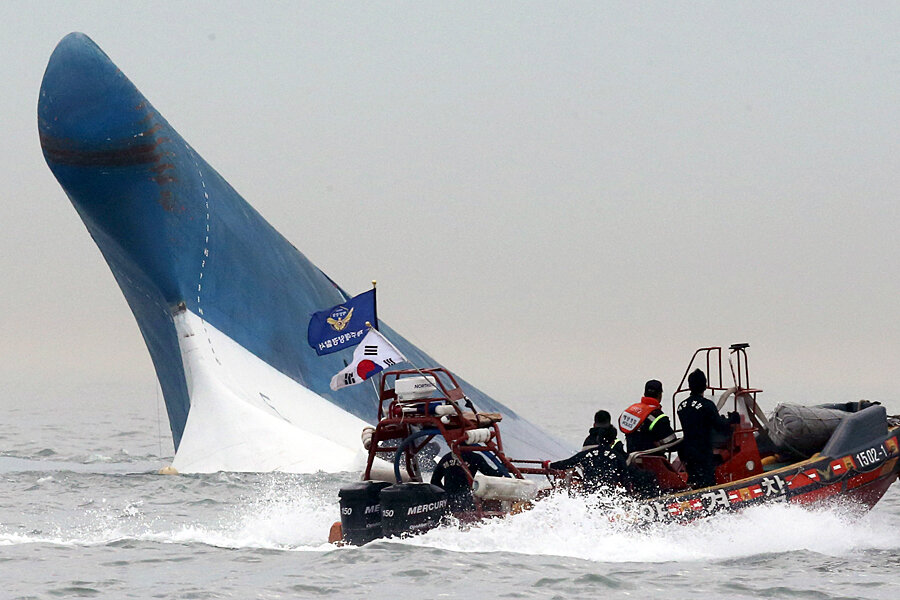Hundreds missing after South Korean ferry sinks, triggering rescue effort
Loading...
| Seoul, South Korea
Nearly 300 people are missing after the sinking today of a South Korean passenger ferry, leaving questions over how the ship went down in apparently peaceful waters in the Yellow Sea.
According to the South Korean government, there were 459 passengers aboard, of whom 325 were students from a high school in Ansan, a suburb of Seoul. Passengers reported hearing a loud noise just before the ship started sinking and eventually capsized as rescue vessels arrived on the scene.
The ship sent out distress calls just before 9 a.m. local time. Four passengers, including a student and a crew member, have been confirmed dead.
The public shock and anguish over the tragedy was compounded by widely varying reports on the number of rescued and missing passengers. Government officials initially said that all but about 100 passengers had been rescued. They later raised that figure to around 300, saying that an error had been made in calculation. Those missing are feared trapped inside the vessel.
Television footage of the sinking showed the vessel on its side in fairly calm seas, with helicopters overhead. With only part of the hull exposed, rescue workers used small, inflatable rafts to rescue groups of passengers. Dozens of private vessels went to the scene to assist with rescues.
An official from Mokpo Hankook Hospital, where injured passengers were taken, said by phone that one had died at the hospital and staff were preparing to handle more patients from the ship.
Trips leaving from the port in Incheon are often cancelled at short or no notice due to unfavorable weather conditions such as poor visibility or rough seas. Weather conditions were reported to have been fine today and it’s not yet clear if weather played a role in the sinking.
The high school students were on the way to the southern resort island of Jeju for a school trip, accompanied by 15 teachers.
One student, speaking on YTN, a South Korean television network, said the teachers informed the students that the fog had lifted enough for safe travel to Jeju. Earlier departures from the same port had been cancelled due to fog.
The 6,825-ton passenger ferry that sank on Wednesday operates daily from Incheon, on South Korea’s northwest coast, to Jeju, a trip that takes over 13 hours and arrives in the morning.
A captain from Jindo Coastal Vessel Traffic Service said by phone that the ferry route is not dangerous, with many boats going back and forth each day.
This tragedy comes just a few months after another incident involving young students in South Korea. In February, the roof of a resort building in the southern city of Gyeongju collapsed, killing 10 and injuring more than 100. All but one of the victims were freshmen college students on a weekend getaway before the start of the academic year.
South Korea’s worst-ever shipping accident took place in 1970, when 320 people died after an overloaded ferry capsized near Busan on the southeast coast. Today’s accident is the biggest since 1993, when another ferry sank in the Yellow Sea.








